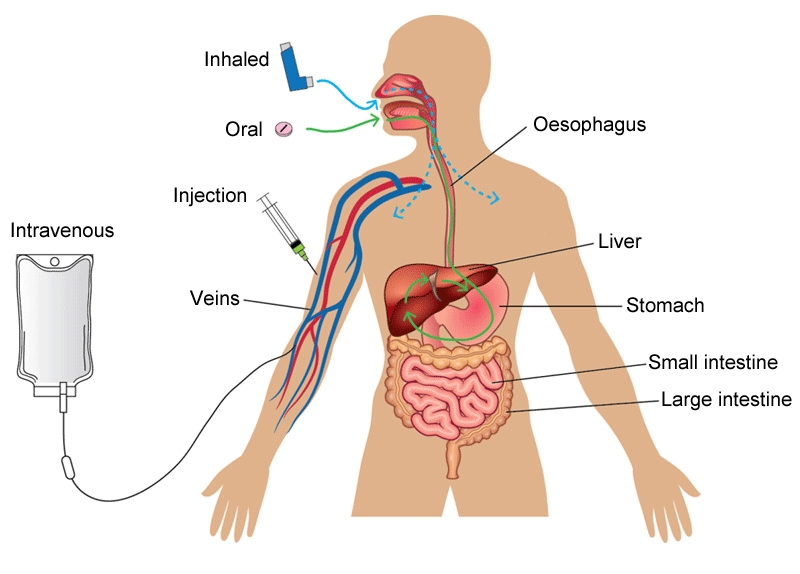Last update: 23 June 2015
A medicine is commonly defined as a substance or preparation that can treat or prevent disease. Historically, most medicines were made from natural products. Advances in the last two centuries have led to the introduction of man-made chemical medicines, biologics and gene therapies. In addition, new technologies, such as tissue engineering, which uses living cells to repair tissues or organs, and nanomedicine, which uses tiny ‘nano’ particles in a variety of healthcare settings, have increased the options available.
Using medicines
The first step in using a medicine is to deliver it into the body.
Medicines can be administered using injections, pills, creams, sprays or drops. Oral medicines pass through the stomach, intestine and liver before entering the bloodstream. Most injections, sprays and drops bypass the digestive system and liver, but need to cross cell membranes to reach the blood. Intravenous injections are delivered straight into the blood through a vein.
- Medicine can be delivered into the body and, crucially, the bloodstream, in several different ways: orally, intravenously, or by being inhaled.
Once in the bloodstream, a medicine is distributed around the body and should find its way to the organs and cells where it is needed.
The final stage is the breakdown of the medicinal compound by the liver. The medicines are carried by the blood to the liver. There, they are eventually broken down into molecules that can be removed from the body. Most water-soluble medicines are excreted through urine; others are excreted in faeces.
Further Resources
- Davis, A. (2006). Chapter 1: ABCs of Pharmacology. In Medicines by design. Bethesda, MD: U.S. Dept. of Health and Human Services, National Institutes of Health, National Institute of General Medical Sciences. Available from: https://www.nigms.nih.gov/education/Booklets/medicines-by-design/Documents/Booklet-Medicines-by-Design.pdf#page=8
A2-1.06.1-V1.1



